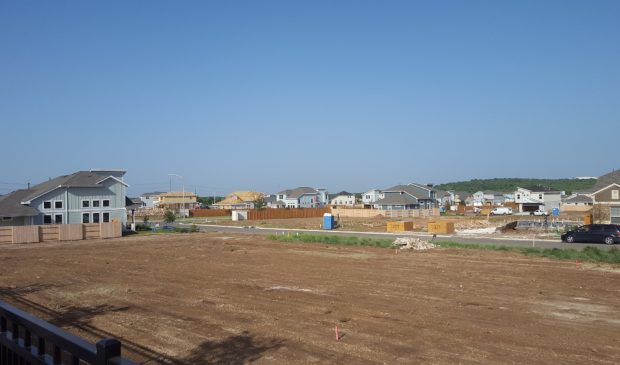Area builders warn of worker shortage impacts on affordable housing
Friday, June 28, 2019 by
Chad Swiatecki As robust and active as the Austin building and development world appears to be, professionals in the construction industry say an ongoing labor shortage is stifling building activity and could present problems for the city’s push to add affordable housing in the coming years.
The city’s affordability issues were among the discussion points Wednesday at the monthly breakfast of the Urban Land Institute of Austin, which looked at the causes and effects of a lack of workers in the construction industry.
By some estimates the statewide labor shortage in skilled trades, paired with the demand for new construction in Austin, is causing about 5 percent inflation on most projects, possibly more for those with an accelerated timeline.
Justin Huling, director of preconstruction for American Constructors, said a lack of new high school graduates seeking training in skilled trades is adding cost pressure and creating delays.
“Here in Austin the jobs report shows unemployment at 2.7 percent, so it’s harder to find talent here than in the rest of the country,” he said. “History shows when you have that level of unemployment you get inflation to a level we haven’t yet seen, and one reason for that is increase in productivity, but in the construction field we’re seeing the inverse of that. There’s still construction jobs being added, but it’s not the skilled labor that you get high productivity out of.”
Panel member Dave Stauch, president of Capital Project Management, said the current hiring environment is the tightest he’s seen in 35 years, with Austin’s rising home prices making it harder for subcontractors to afford to live near work sites in the city. Rather than facing commutes of an hour or more into Austin, he said, many opt to work on projects closer to their homes.
Those concerns have caused city leaders and others to look for ways to preserve and build more workforce housing for workers earning 80 to 120 percent of the area’s median income.
Joe Basham, an attorney for the construction law firm Allensworth and Porter, said the shortage of building-related workers extends far off the job site, causing owners of projects to have to “pick two” between on-budget costs, quality work and finishing on schedule.
“There’s shortages at every level of every project, from the developer to the lender to the geotechnical engineer, civil engineer, structural engineer, architect, subcontractors, everybody … those problems are causing delays at every level,” he said. “There’s a problem with getting the important things done even before construction work can begin.”
Stauch said his frequent conversations with city leaders have started to have an impact in terms of expectations for city building projects and relaxing regulations for affordable housing developments to keep them on budget.
“We are now finally getting into a regulatory environment that is changing and affordable housing is being talked about in a favored tone, and some of the limitations and restrictions on sites have eased so you can develop it,” he said, praising the recent work of Assistant City Manager Rodney Gonzales. “With regulations laying on top of the tough jobs market – that itself is adding 5 percent inflation easily – taking care of that regulations piece is the only thing you can do, because you’re not going to change the labor situation anytime soon.”
While current jobs training efforts through Workforce Solutions Capital Area haven’t included construction as a focus area, Huling said the city and county should work with local trade groups to find ways to push more young workers into education and training in the field.
“A lot of the effort that’s been going on has been around recruiting and developing a training program because a lot of the skilled trades are multifaceted, from carpentry, waterproofing, roofing, so across the board lots of different training programs are needed for all sides of the construction industry,” he said. “It’s in its infancy. Houston has done lots of good things that are being looked at here, and (Associated of Builders and Contractors) is looking at how they can take what has been done in Houston and bring it up here, with partnerships with the city and county being very beneficial.”
Photo by Straley [CC BY-SA 4.0], via Wikimedia Commons.
The Austin Monitor’s work is made possible by donations from the community. Though our reporting covers donors from time to time, we are careful to keep business and editorial efforts separate while maintaining transparency. A complete list of donors is available here, and our code of ethics is explained here.
You're a community leader
And we’re honored you look to us for serious, in-depth news. You know a strong community needs local and dedicated watchdog reporting. We’re here for you and that won’t change. Now will you take the powerful next step and support our nonprofit news organization?


